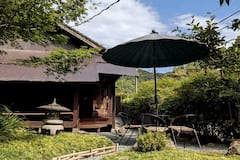Looking to buy something unique and special during your trip to Japan but not sure what you’re after? This list is for you. Japan has a wonderful culture that juxtaposes tradition with modern trends. This is just one of the many reasons why so many people are head over heels in love with this country. During your time in Japan, you will have many opportunities to find a souvenir that you can’t get from another country. The question is… what should you buy? If you’re feeling overwhelmed, don’t panic. Simply reach for a nice, relaxing cup of green tea and let’s go shopping together! To save you from trawling the shops, we’ve pulled together a list of what to buy in Japan. Read on and discover how you can take a slice of this East Asian destination home.
1. Wagashi candies

These colorful and intricately designed sweets are actually made as a pairing for green tea. Although legend has it that they were originally made for royalty, you can now find them in many prefectures across Japan. The traditional filling is sweet azuki bean paste, but as with everything in Japan, there are many new flavors. Some of the flavors, such as sakura, are seasonal. Did you know that the popular Japanese snack dango (rice balls on a stick) is also a type of wagashi?
2. Sensu folding fans

If you’re in Japan during the steamy summer months, you’ll see both men and women using these intricate fans to cool themselves. There are actually about ten different styles of sensu fans. The hi-ogi style is made from cypress wood - it’s the oldest kind and is used during ceremonies and as decoration. From this style, the popular kawahori-ogi paper fans were created. If you partake in a tea ceremony in Japan, the sensu fan will most likely be the cha-sen style. Finally, the mai-ogi are used in dance. We recommend buying from a dedicated fan maker to ensure that you have the correct fan for your purpose. It’s one of the most beautiful souvenirs you can buy in Japan.
3. Kendama toys

You might not have known what these are called, but we’re sure that you’ve seen them. This popular toy consists of a ball tied to a wooden handle, and the aim of the game is to flick the ball and try to ‘land’ it on the wooden handle. It sounds simple but it can be quite difficult. It was a traditional Japanese toy from the early 18th century and is still on sale today. So, pop into the nearest store and see if you can buy a kendama as a souvenir - it guarantees hours of fun.
You might be interested in these Airbnbs!
4. Hanko (Japanese stamps)

So, you might be wondering - why do these exist? To the average Japanese household, a hanko is the same as signing your name. Need to sign a form? You’d be expected to use your hanko. Got a parcel delivered in the mail and need to sign for it? Yep, you’ve guessed it - another hanko opportunity. This is an important tool for everyday life in Japan, and now you can purchase one for yourself. Just bear in mind that there are, in fact, three different hankos, so be sure to buy the correct one. If it’s just as a souvenir, then we’d recommend the mitome-in (a Hanko stamp for confirmation).
5. Sake

Primarily, sake is Japanese alcohol that is made by fermenting polished rice to remove the bran. It’s so popular in Japan that you can find it everywhere, from cheap, 1 USD (100 JPY) sake in convenience stores to ceremonial sake with a much higher price tag. Also, you’ll likely see huge barrels of sake at shrines. We recommend trying a few different styles to discover your perfect taste before buying. Also, one extra thing to note - the word ‘sake’ in Japanese simply means 'alcohol’, so if you want Japanese sake, be sure to say 'Nihonshu’.
6. Kimono

Nowhere else in the world can you buy such elaborate and beautiful kimonos. Depending on your budget and style preferences, there is something for everyone. If you just want something cheap, you can pick something up from a department store. Or, for a kimono that’s a bit more upmarket and unique, we’d recommend sourcing out a vintage kimono store and buying a handmaid kimono. They can be difficult to put on by yourself, so be sure to seek help.
7. Omamori (Japanese charms)

If you’re looking for good luck for a specific occasion or just generally in life, then you should definitely pick up an omamori. These cute Japanese charms are small enough to dangle on a phone or bag, so they make for great souvenirs. You can find plenty of omamori to choose from in shrines, but for a more effective charm, find a shrine that is specific for your needs. For example, if you need to pass a test, head to a shrine dedicated to Tenjin, the kami of academics. Inside the small and traditionally handmade cloth is a prayer. There is just one rule: don’t ever open it.
8. Matcha tea

We all know that Japan is crazy about matcha tea, so no trip here would be complete without purchasing some. The product is made from a special green tea leaf that is ground down to a fine powder and traditionally served hot. There are now a million and one different matcha teas on sale in Japan, but for the most authentic taste, head to a specialty store to purchase your tea. Somehow, the matcha tea and lattes in cafes and supermarkets just don’t live up to the real deal.
9. Japanese kitchen knives

If you call yourself a foodie, you probably already know about the prestige of Japanese kitchen knives. But, just in case you’re not a foodie fanatic, these knives are known worldwide for their quality and design. The traditional knives are made from a material called hagane, which was also used to forge samurai swords - you might say these kitchen knives are kind of like mini-samurai swords. These knives will need to be maintained, so if you don’t have the willpower or motivation to sharpen them regularly, go for the stainless steel knives. Whichever material you prefer, be sure to shop around before buying.
10. Aizome textiles
Editor's Note: There's no photo available at the time of writing
Also known as indigo-dying, this style of textile production was introduced from China in the 10th century. From what was once a huge industry in Japan, there are now just a few handfuls worth of producers left. The drying and dying of indigo is a long and painstaking process. Today, many of the traditional methods are still used. The best way to enjoy your aizome textile is to find a workshop, of which there are still many, and buy directly from the makers. This way, you can learn more about the history of these beautiful textiles.
Found your ideal Japanese keepsake?
Japan is a culture known for its consumption. Everything is based around comfort and convenience, so you can easily find a multitude of souvenirs and keepsakes on your holiday. Having said that, we think that this list covers a number of things that you simply can’t get in another country. Hopefully, we’ve answered your question of what to buy in Japan. To summarize: buy something special, and remember that you’re in one of the most fascinating countries in the world.
History
Get Trip101 in your inbox
Unsubscribe in one click. See our Privacy Policy for more information on how we use your data























Create an account to